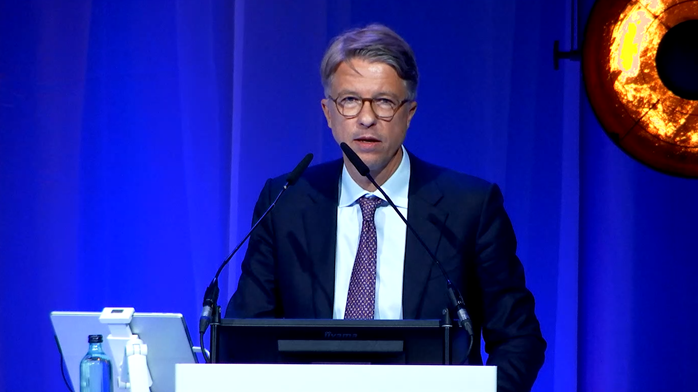Frontline ATRA-ATO regimen improves EFS in high-risk APL




 Dr Uwe Platzbecker
Dr Uwe PlatzbeckerThe addition of arsenic trioxide (ATO) to all-trans retinoic acid (ATRA) with idarubicin significantly improves event-free survival (EFS) compared with ATRA plus chemotherapy (CHT) in the first-line setting for patients with newly diagnosed, high-risk acute promyelocytic leukaemia (APL), according to the APOLLO trial presented at EHA 2024.
“Pioneered by the APL0406 trial, prior investigations have demonstrated the superiority of ATRA-ATO over standard ATRA-CHT as front-line management of low/intermediate risk APL,” said lead author Dr Uwe Platzbecker from University Hospital Leipzig in Germany.
“However, the efficacy of ATRA-ATO in high-risk APL, defined as >109/L white blood cell count at diagnosis, has not been studied in randomized trials so far,” he noted.
The phase III APOLLO trial included 131 patients (median age 46 years, 51.9 percent male) with newly diagnosed, high-risk APL who had a median ECOG performance status 1. Participants were randomized to receive either ATRA-ATO* plus two doses of idarubicin 12 mg/m2 on days 1 and 3 (n=68) or ATRA-CHT** (n=63).
The APOLLO trial met its primary endpoint of improving EFS by 10 percent (77–87 percent) at 2 years, with a significantly higher EFS rate observed in the ATRA-ATO arm vs the ATRA-CHT arm (88 percent vs 70 percent; p=0.02). [EHA 2024, abstract S102]
The 5-year EFS rate was also significantly higher with ATRA-ATO compared with ATRA-CHT (87 percent vs 55 percent; p=0.0034).
Secondary endpoints
At 2 years, the cumulative incidence of relapse was significantly lower in the ATRA-ATO arm than in the ATRA-CHT arm (1.6 vs 14 percent; p=0.011).
A lower rate of early mortality, within the first 30 days of induction treatment, was also observed with ATRA-ATO than with ATRA-CHT (7 percent vs 10 percent), primarily due to intracranial bleeding (3 vs 4 patients).
In addition, the ATRA-ATO regimen was tied to fewer haematologic toxicities, including thrombocytopenia (15 percent vs 22 percent; p=0.293) and neutropenia (22 percent vs 46 percent; p=0.005) compared with ATRA-CHT.
Of note, haematologic toxicity during consolidation therapy was basically absent in the experimental arm, whereas, as expected based on the intensity, it was very common and significantly higher in the standard arm, Platzbecker noted.
Although not significant, the experimental arm demonstrated higher overall survival rates at 2 and 5 years (93 percent for both time points) compared with the standard regimen arm (87 percent and 82 percent, respectively).
“Overall, we believe that these first results of first-line therapy with ATRA-ATO with two initial doses of idarubicin resulted in superior EFS compared with conventional ATRA-CHT in patients with high-risk APL,” said Platzbecker.
“Further analysis of the APOLLO trial may support the implementation of this regimen as the new standard of care in [this patient population],” he noted.